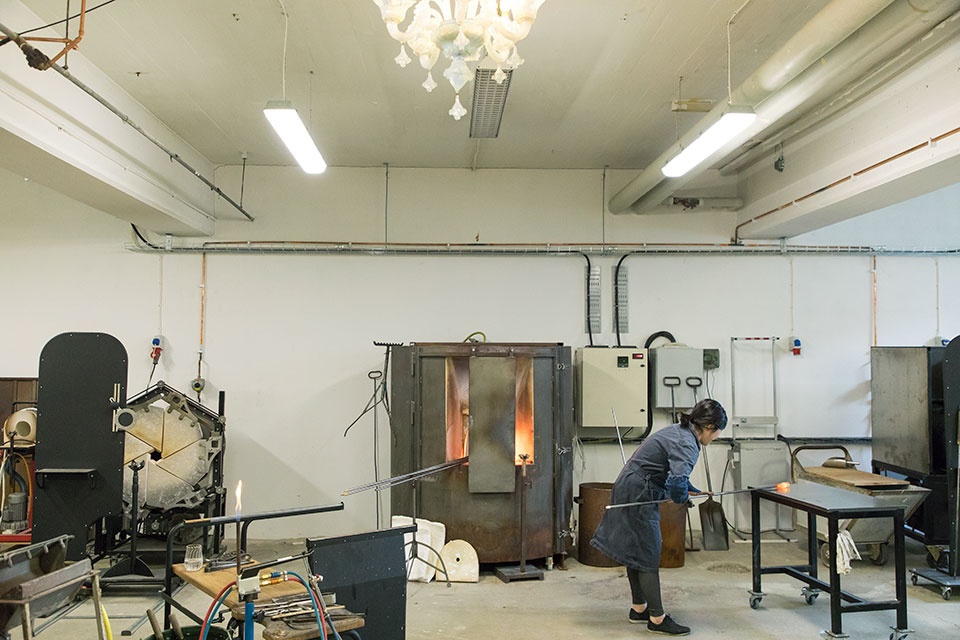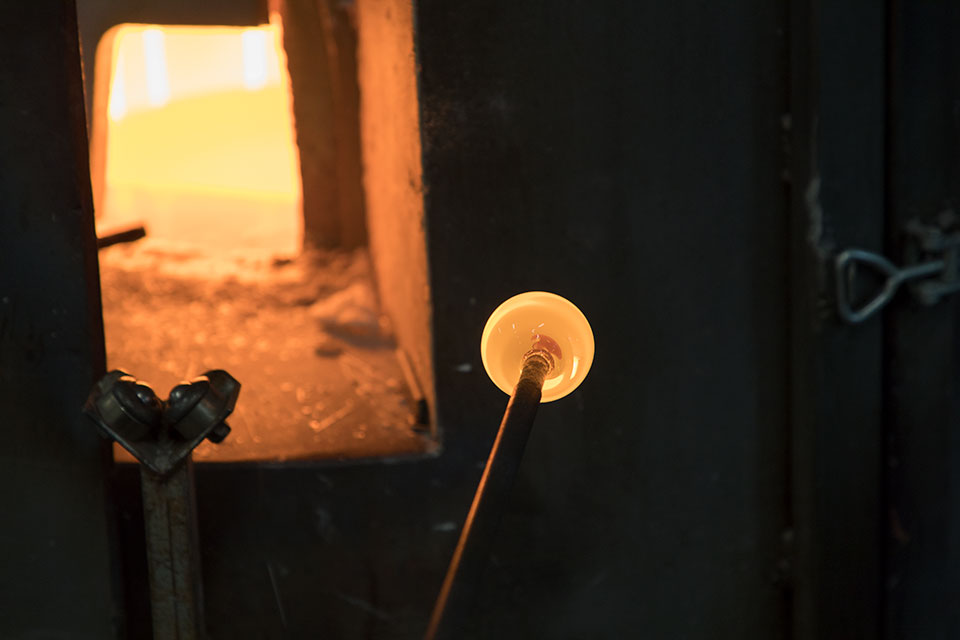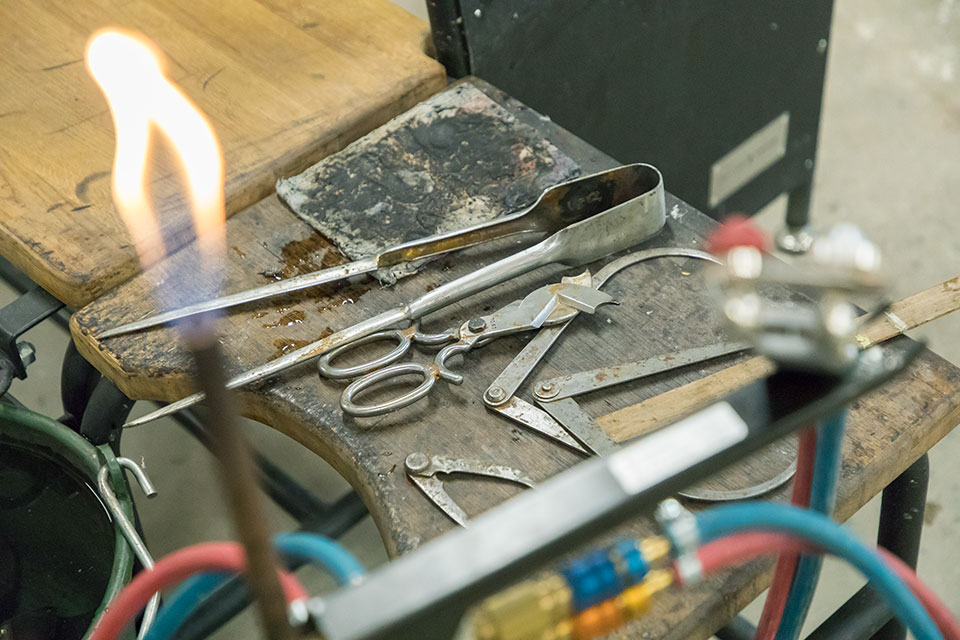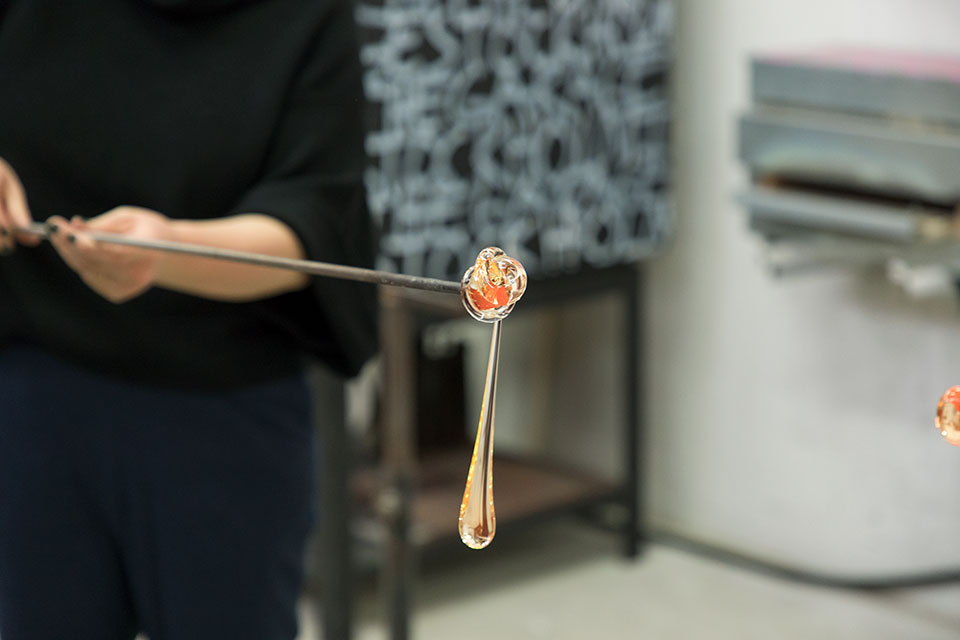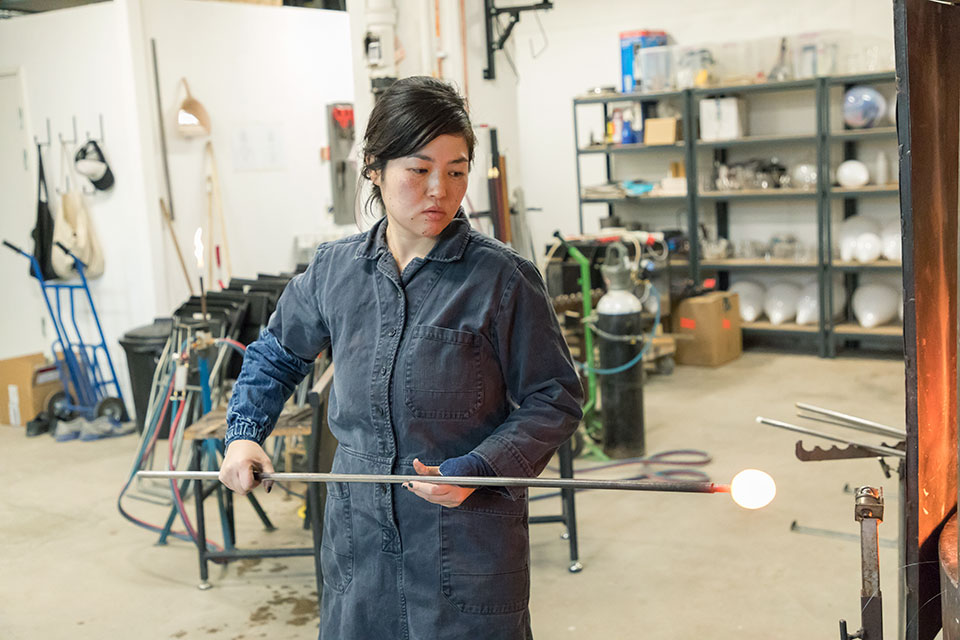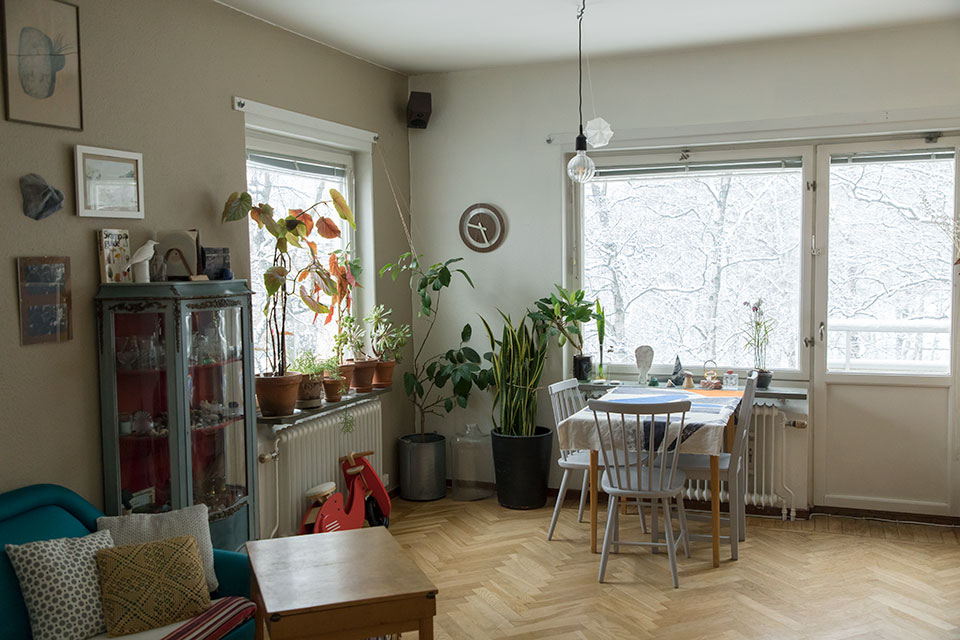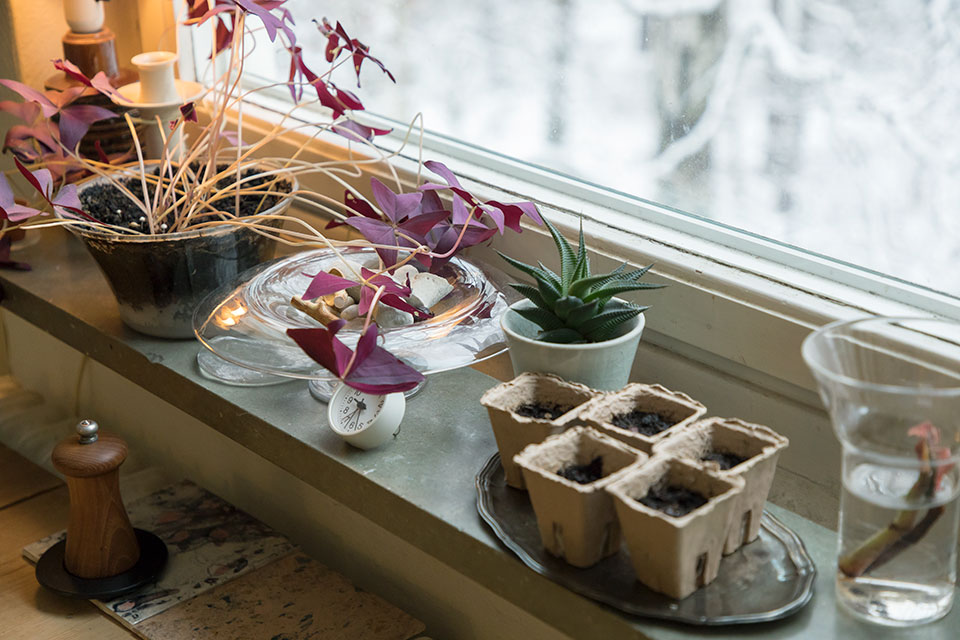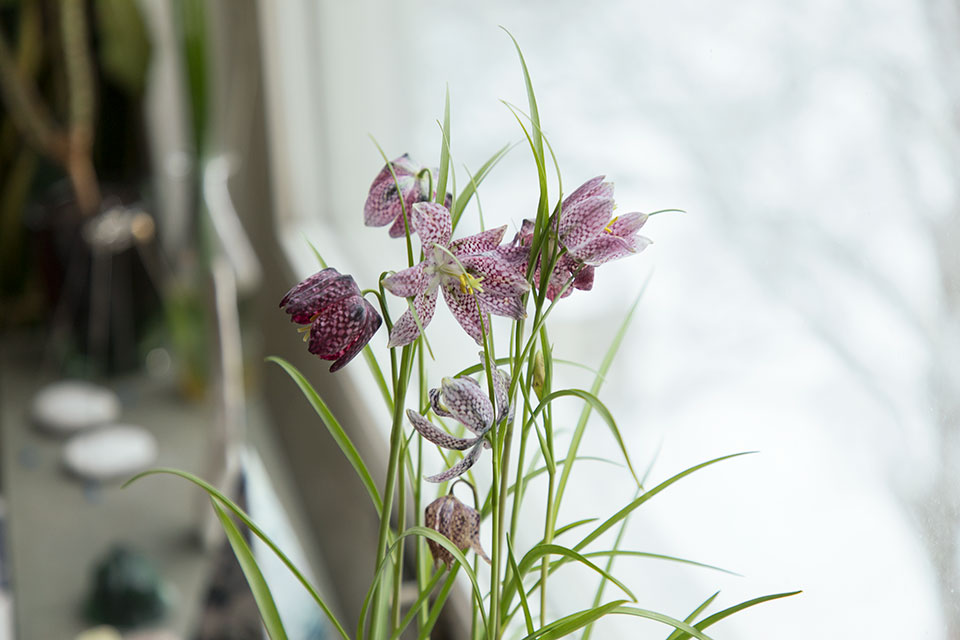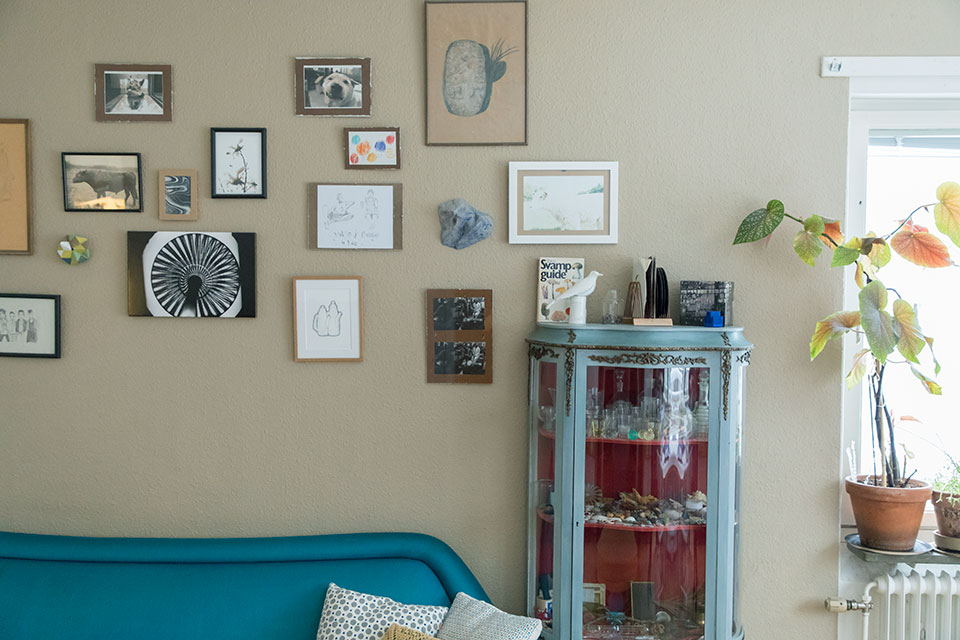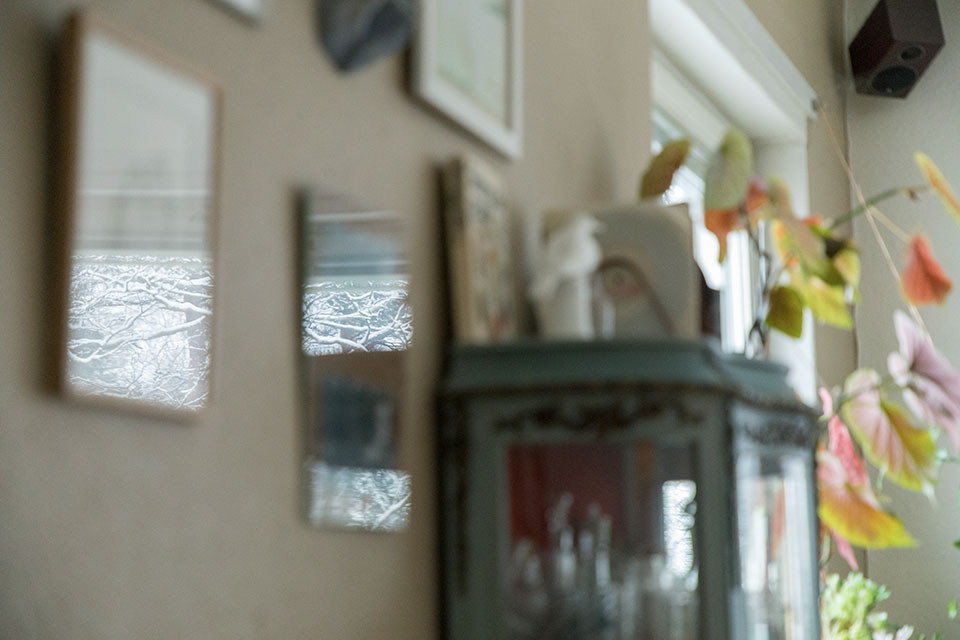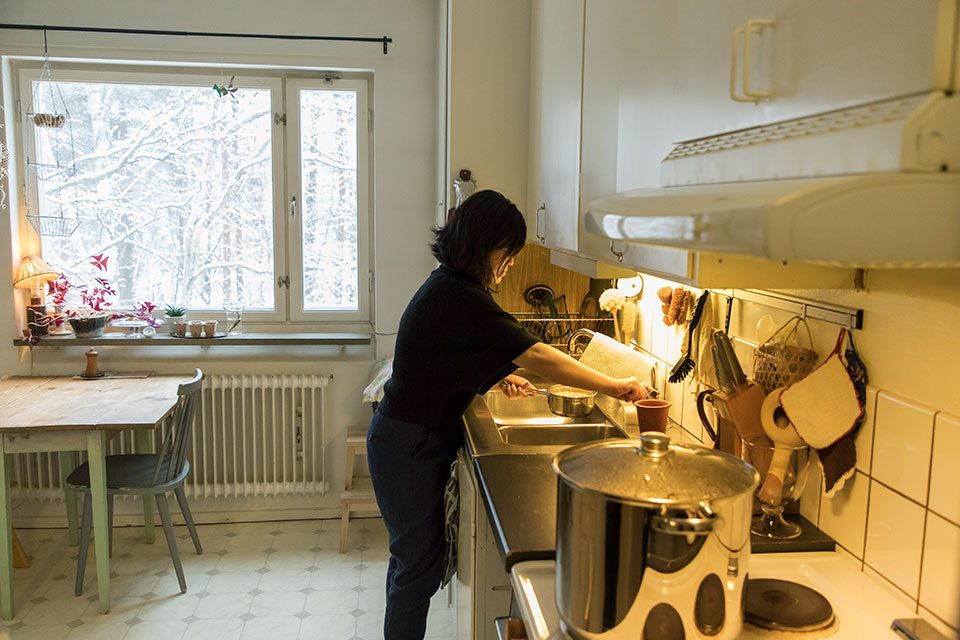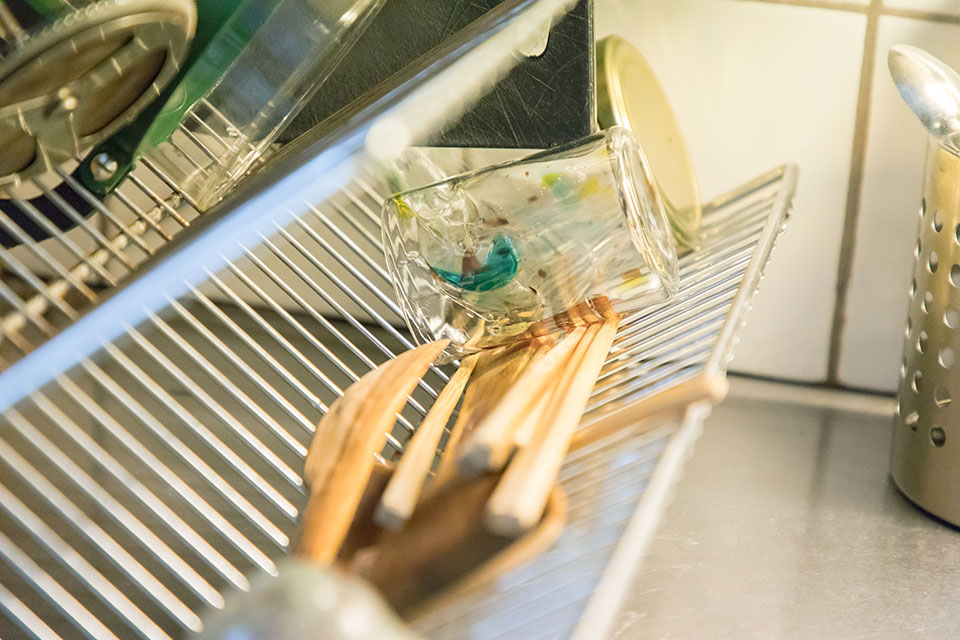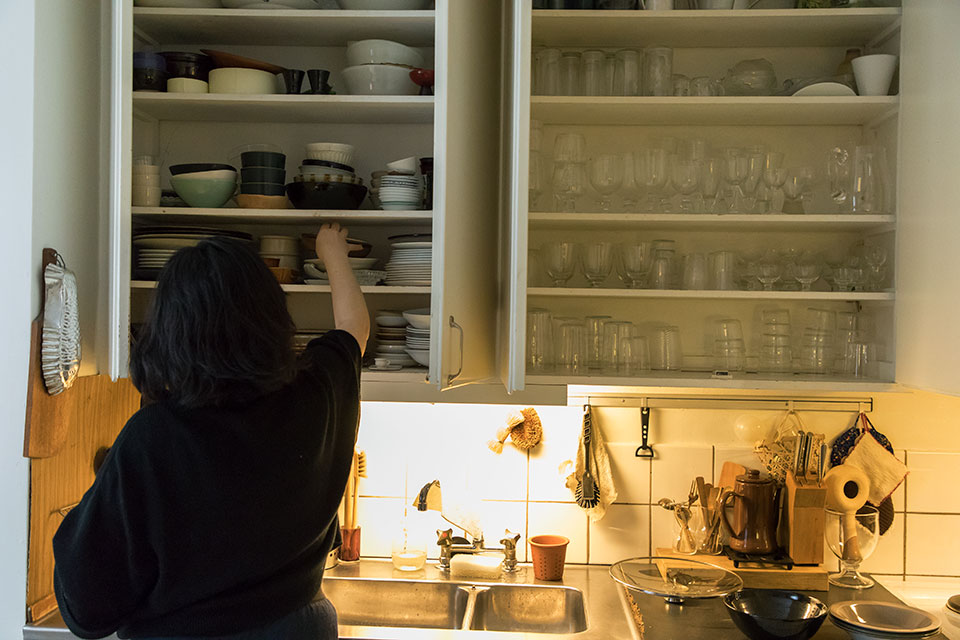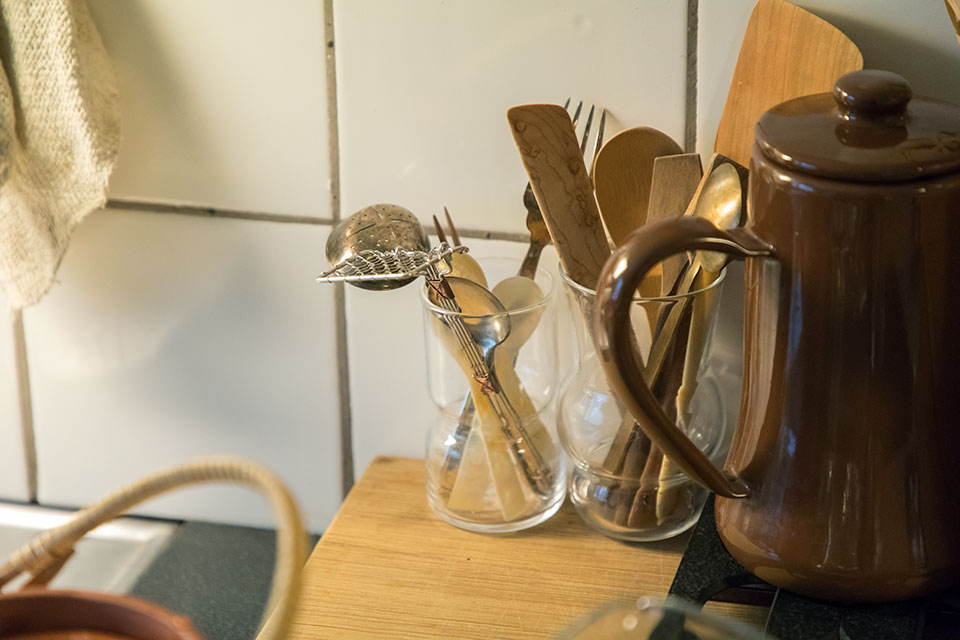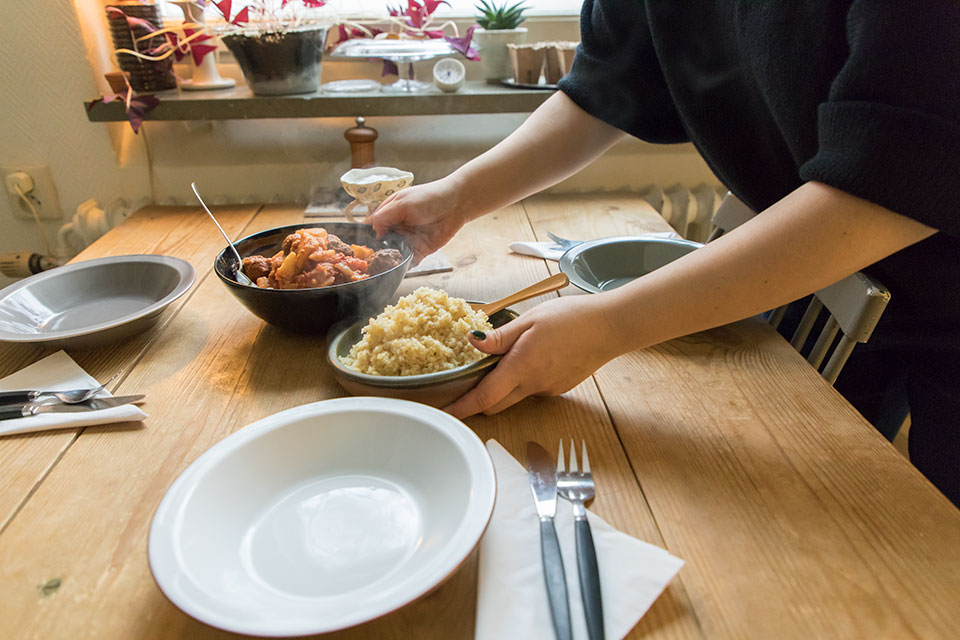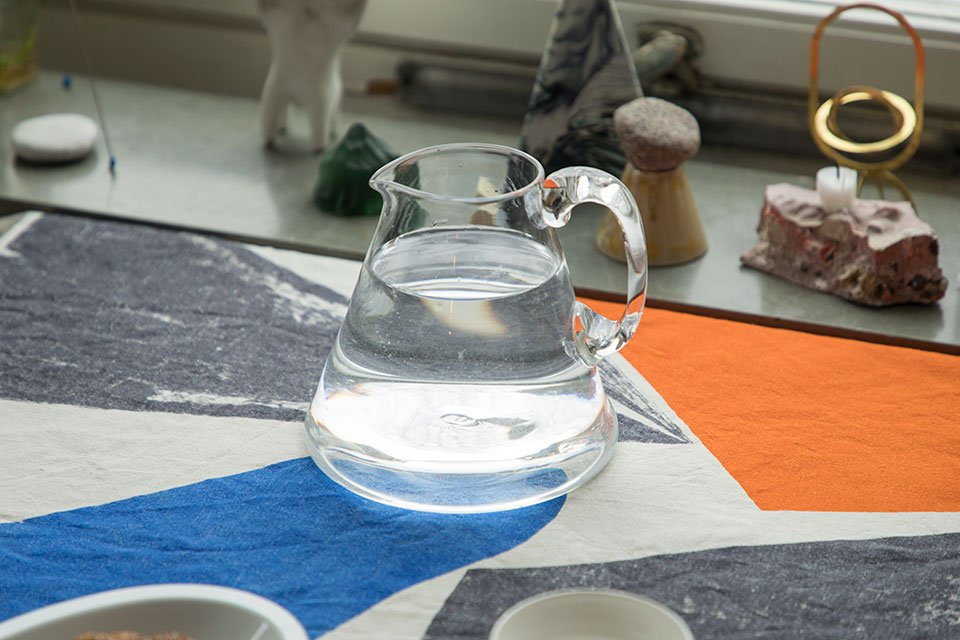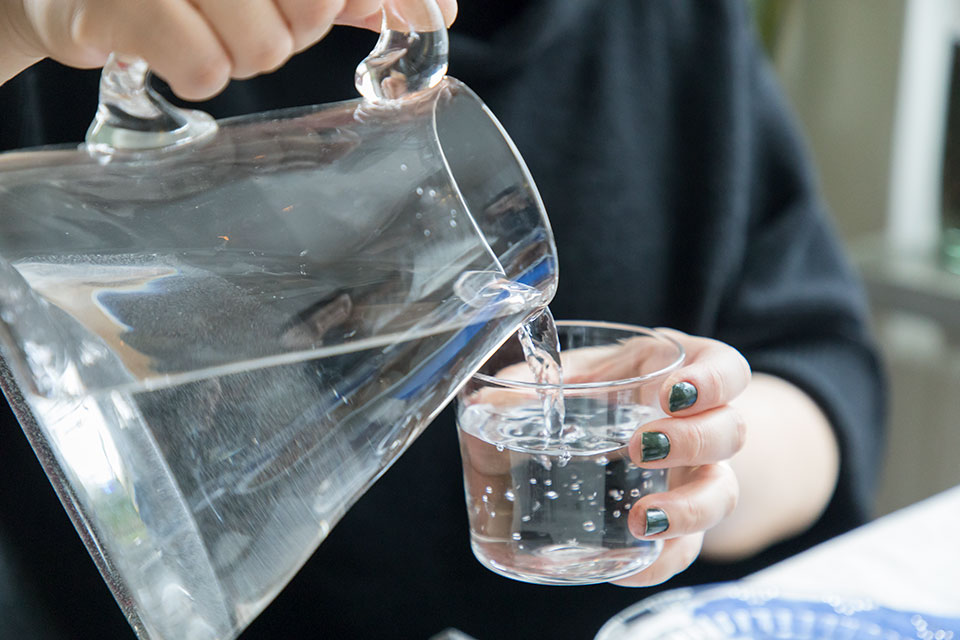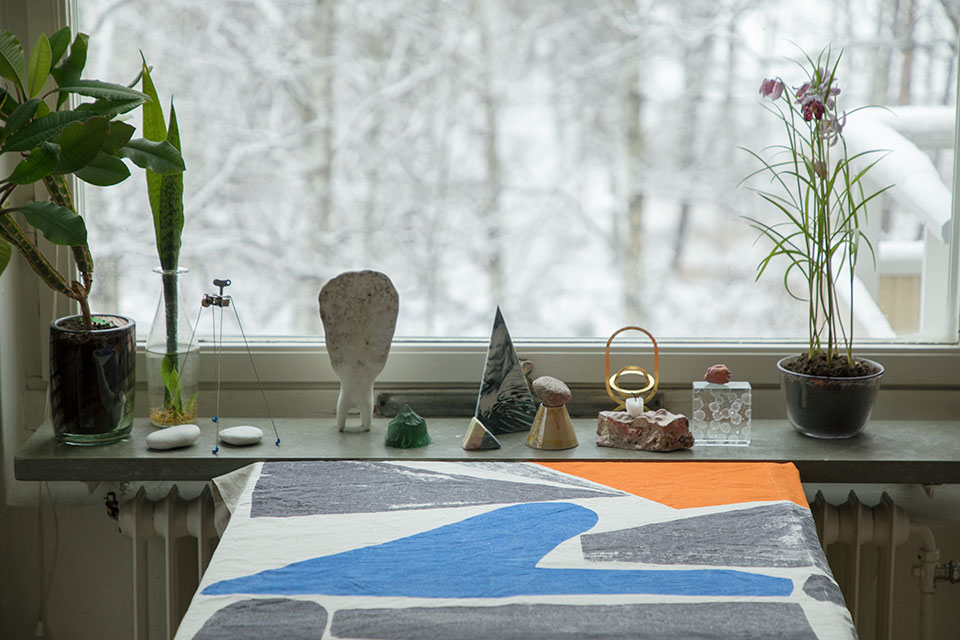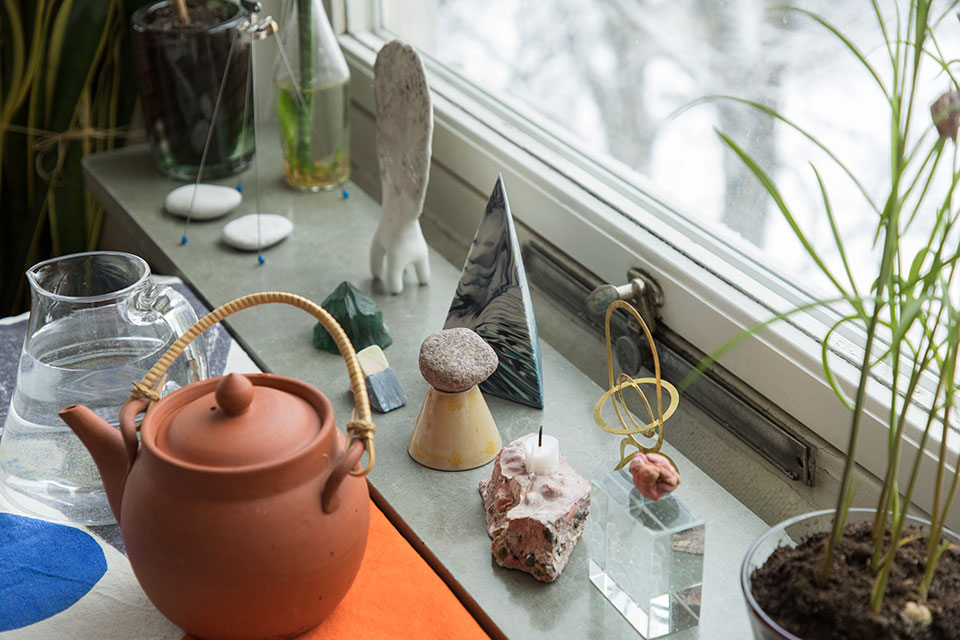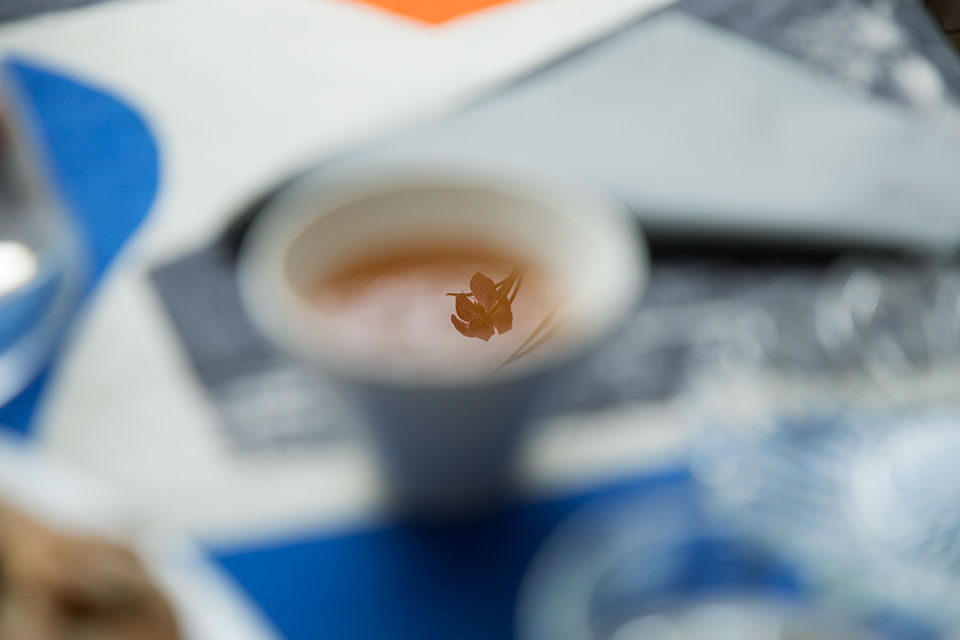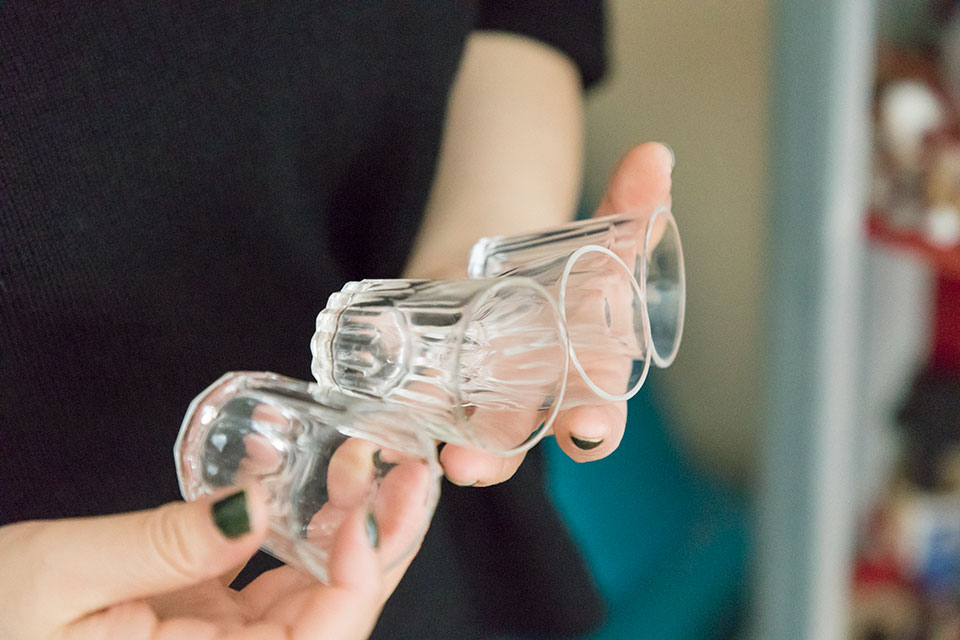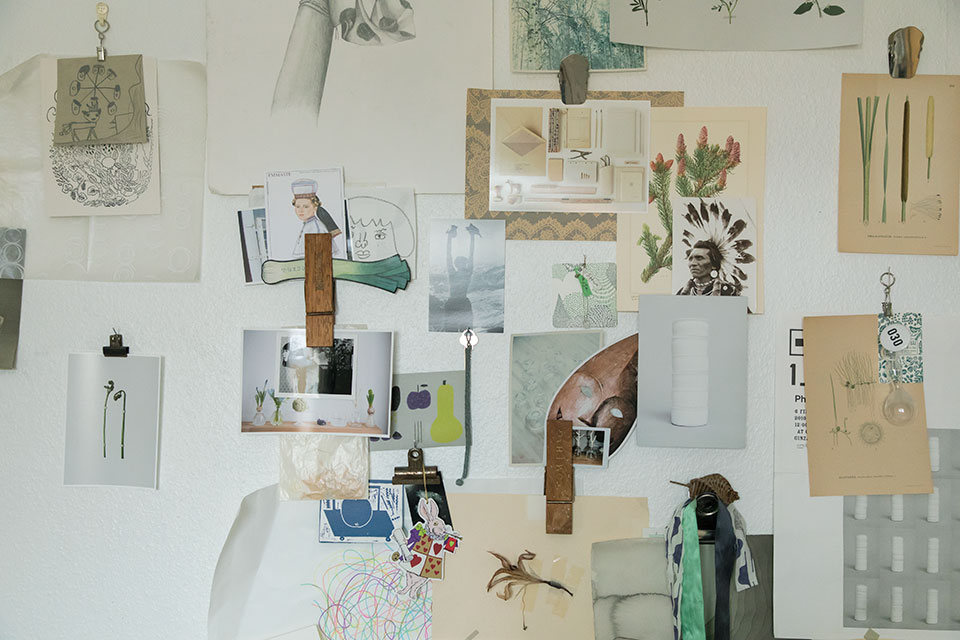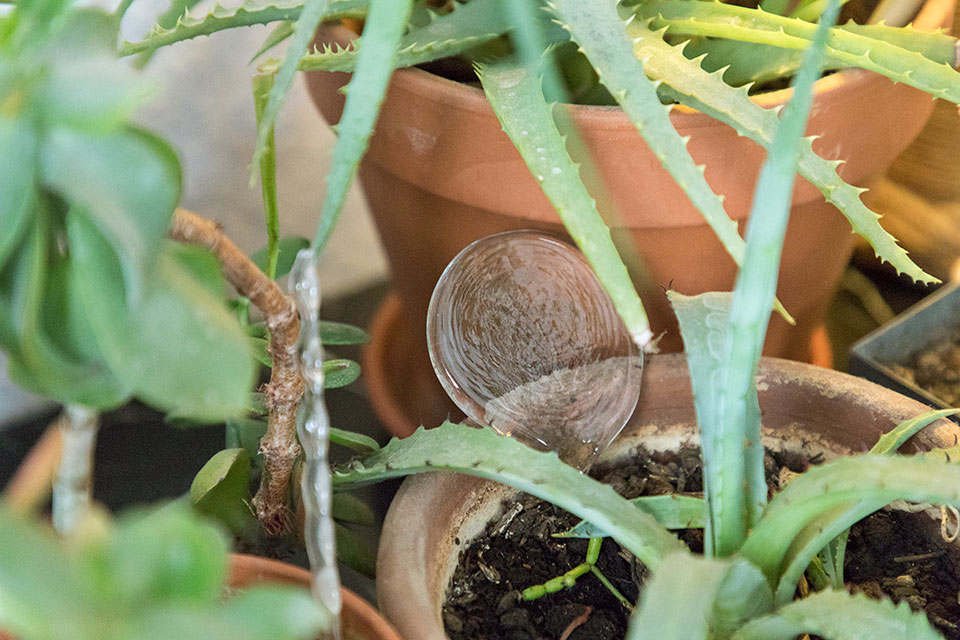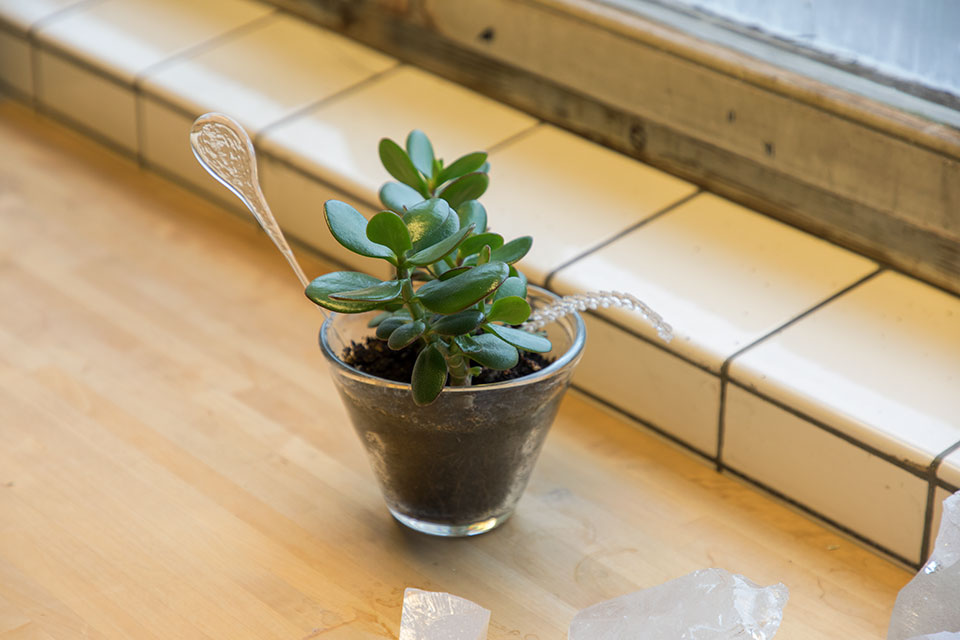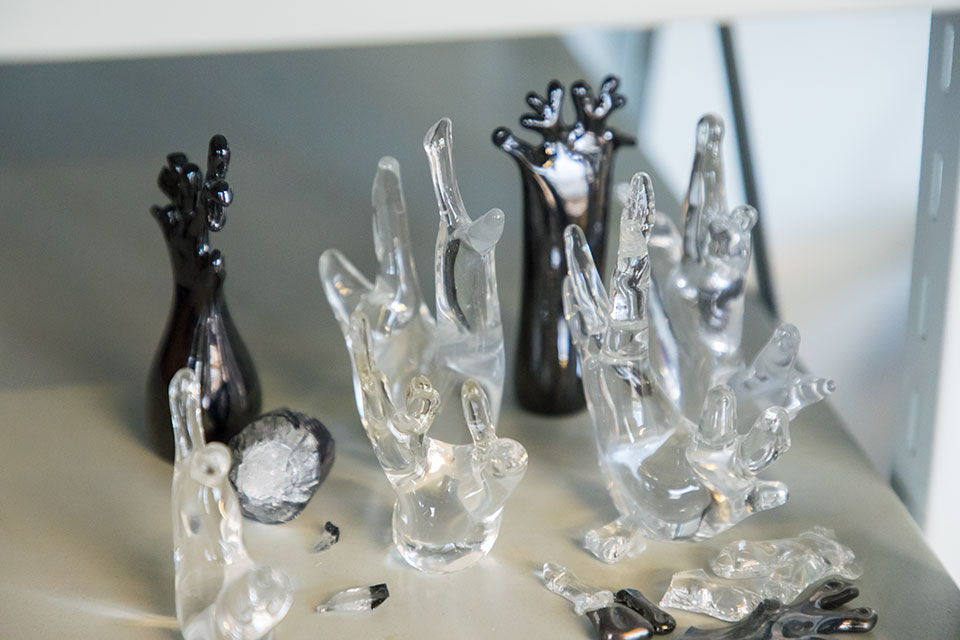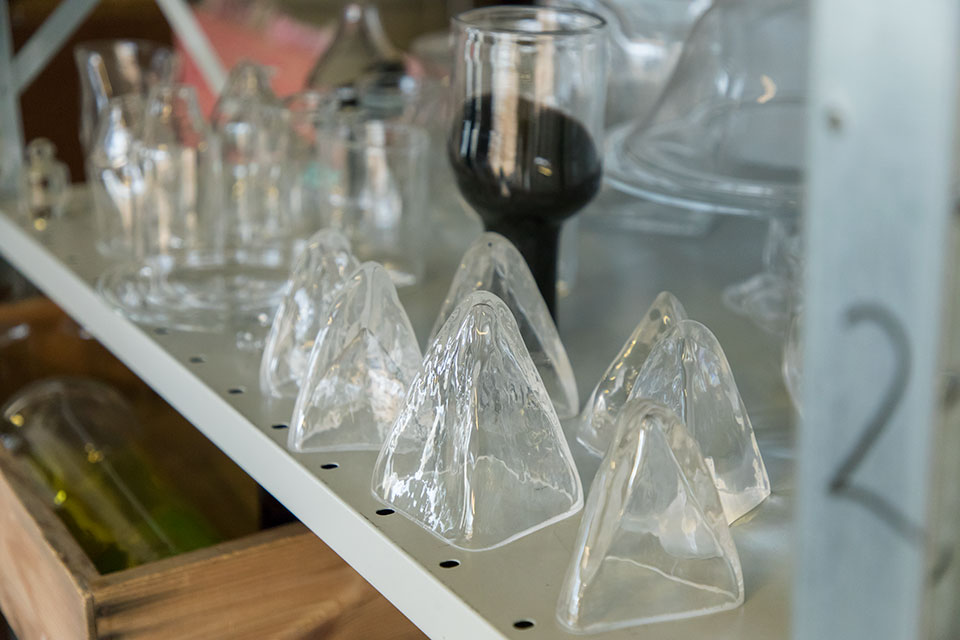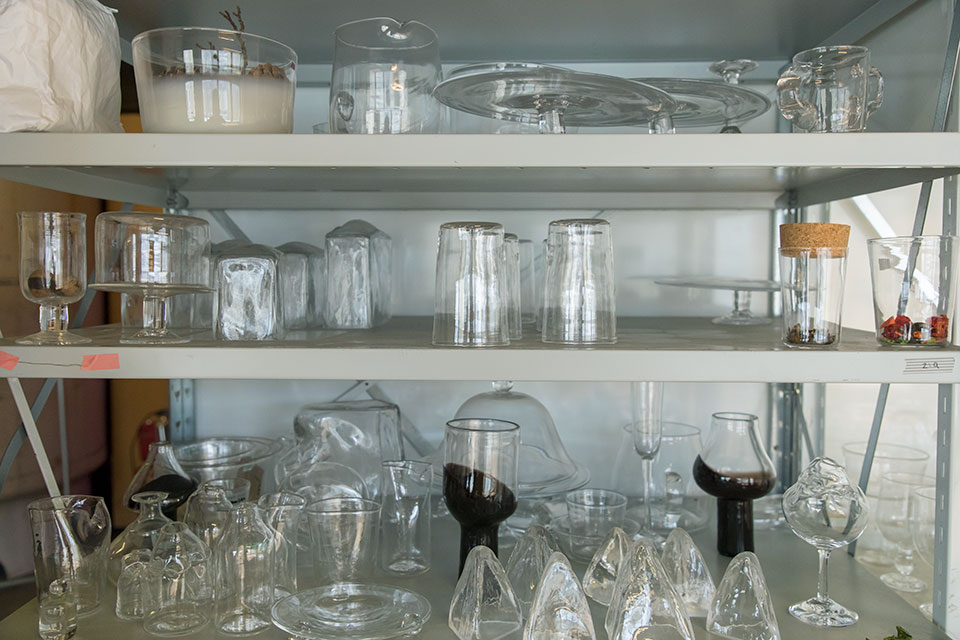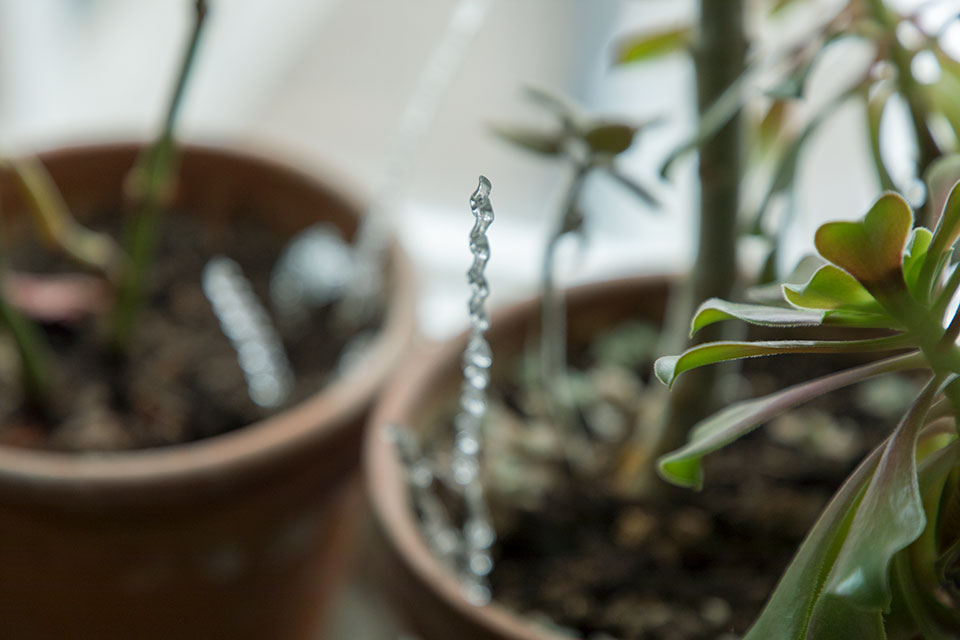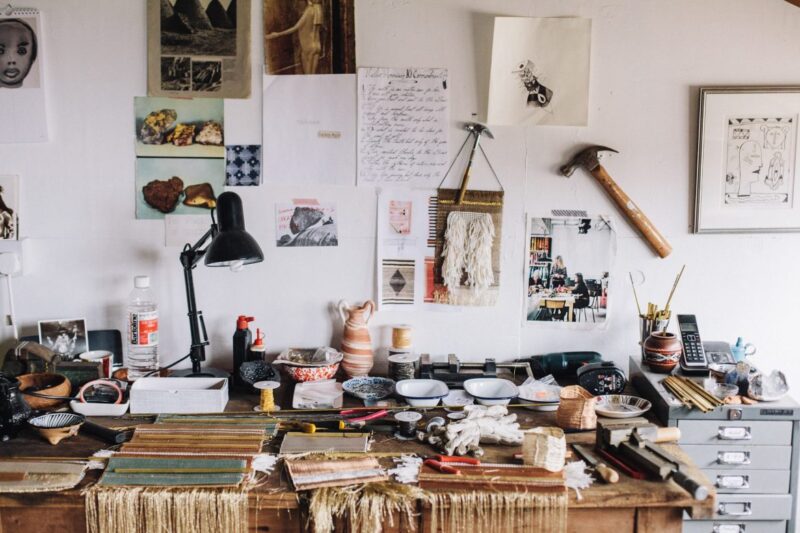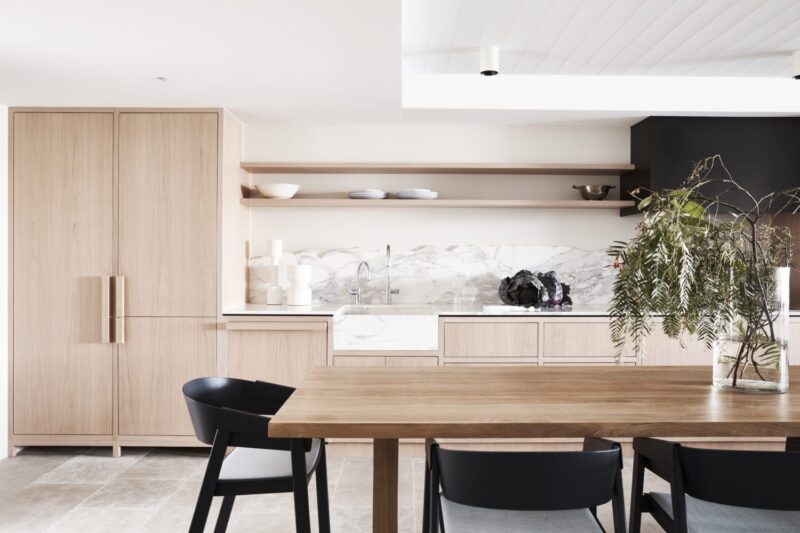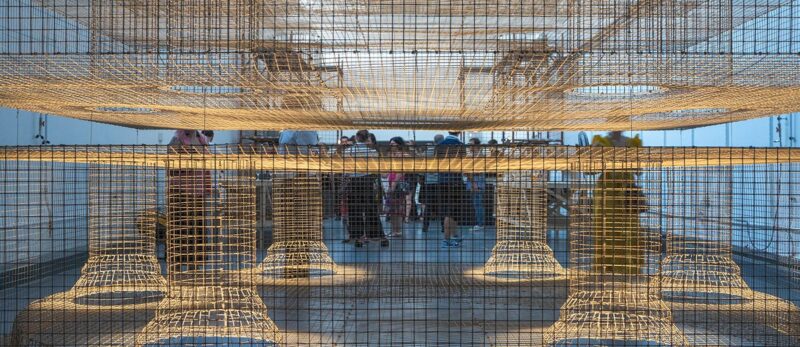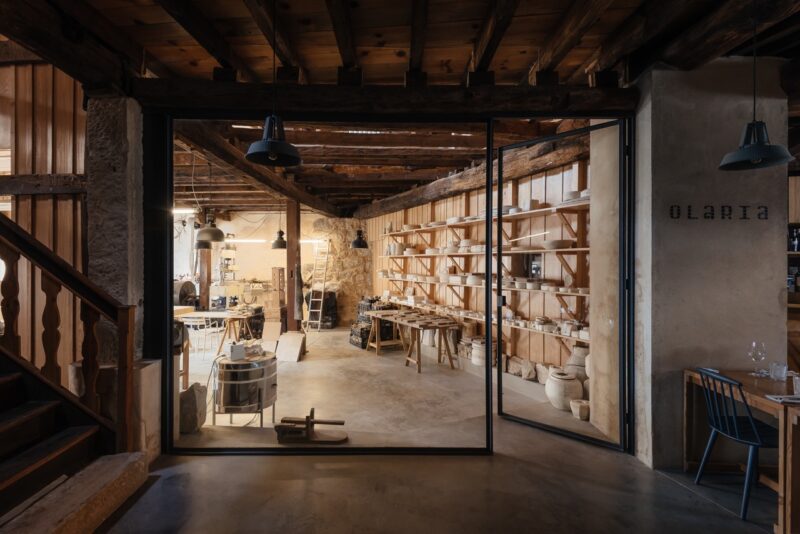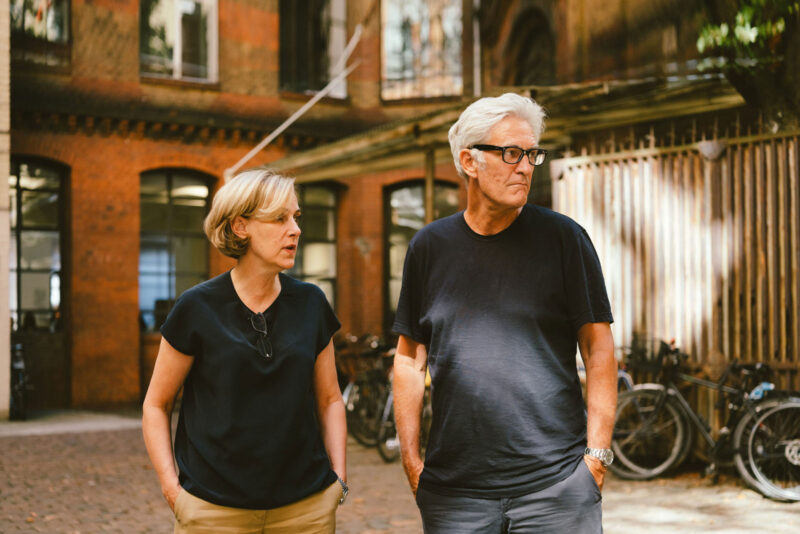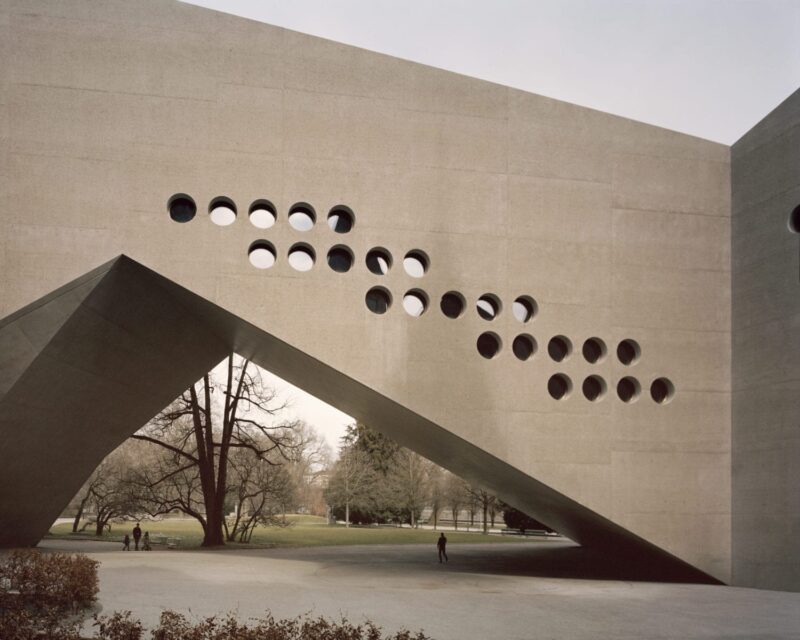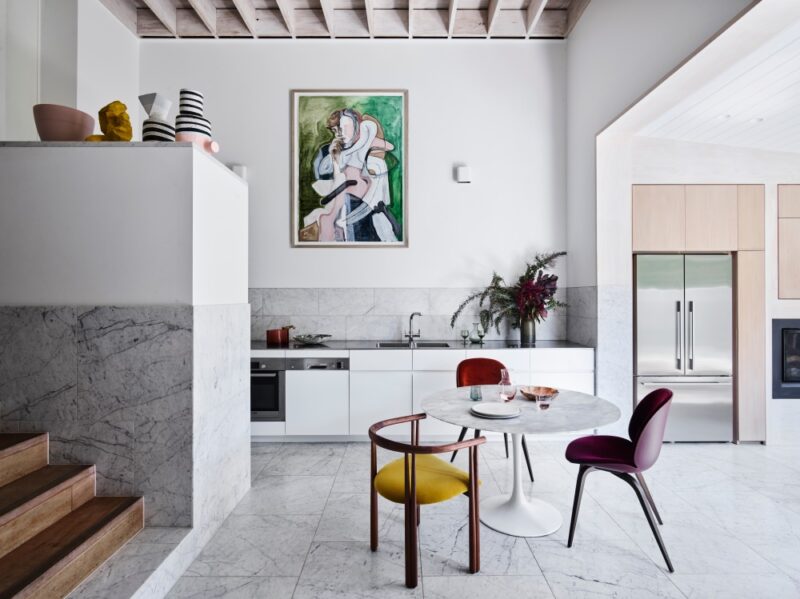采訪檔案 | Yoko Andersson Yamano
玻璃藝術家 | 瑞典,斯德哥爾摩
作為一名玻璃藝術家,Yoko Andersson Yamano用她熟練的技巧創作了各種各樣美麗的作品,從日常使用的酒杯到藝術作品。她曾在瑞典一家久負盛名的玻璃廠接受培訓,並在一所藝術學院學習,之後在Ingegerd Raman(瑞典陶器藝術家和玻璃器皿設計師)手下學習。Yamamo擁有精湛的技藝和藝術敏感性,她每天都在為她的創作工作。她說:“讓我的作品發揮作用很重要。” 然而,在她看來,這可能並不適用於所有人。她認為隻對少數人有效就行了。因為她的作品的功能最終是由用戶決定的,所以它可以非常靈活。
As a glass artist, Yoko Andersson Yamano has created various beautiful pieces from a drinking glass for everyday use to artistic work with her proficient skills. She has trained at a long-established glass factory in Sweden and learned at an art college before studying under Ingegerd Råman, a Swedish pottery artist and glassware designer. Having both artisanal skills and artistic sensitivity, Yamamo blows a glass while working on her creation every day. She says “it’s important for my pieces of work to be functional.” According to her, however, the function doesn’t have to work for everyone. She thinks it is fine if it works only for a few individuals. Since the functionality of her piece is determined by its end-user, it can be really flexible.
Yamamo已經在瑞典生活了很多年,目前住在斯德哥爾摩市中心附近的一條住宅區街道上。我們參觀了她的住處,她和丈夫、兒子住在那裏。
Having been in Sweden for many years, Yamano currently lives in a house located on a residential street near Stockholm’s city center. we visited her place, where she lives with her husband and son.
首先,請告訴我們是什麼促使你立誌成為一名玻璃藝術家?
First of all, please tell us what motivated you to aim to be a glass artist.
第一件激發我興趣的事情是:我母親在我十一或十二歲那年帶我去參觀了斯堪的納維亞的一個展覽。現在回想起來,我想這些都是瑞典的玻璃工廠製造的,比如KOSTA BODA和orreform s,還有芬蘭的工廠。作為一個小女孩,我對它是如何製作感到好奇,並開始尋找許多不同的東西來了解這種工藝。 即使在那個時候,我也傾向於沉浸在手工和材料中,同時提出問題(笑)。我總是想“為什麼?”“通過研究,我意識到我想要做批量生產的工藝品,而不是一次性的藝術品。”我想那些手工藝品會給我帶來小小的快樂,讓我意識到這樣一個事實,那就是這種特殊的手柄形狀非常適合我。然後我開始尋找學習這種手藝的地方,來到了瑞典。
The very first thing that motivated me was an exhibition on Scandinavia my mother took me to when I was eleven or twelve. I saw some glass work there. Looking back it now, I think those were pieces made at Swedish glass factories such as KOSTA BODA and Orrefors as well as Finnish factories. As a little girl, I then became curious about how it was made and began to look up many different things to know about the craft. Even back then, I tended to get immersed in crafts and materials, while firing questions (laughs). I always thought “why?” Through the research, I realized that I wanted to make mass-produced crafts rather than one-off art pieces. I thought those crafts could bring me small happiness by making me realize things like the fact that this particular handle shape fits me really well. I then started to look for a place to learn such crafts and came to Sweden.
我認為當時關於它的信息很少。你是怎麼知道的?
I think there were few information on it around that time. How did you find out?
我12歲的時候就開始找了。在我高中的時候,我聽說瑞典有一個地方,我去了大使館。然後我收集了一些資料。因為這些都是用瑞典語寫的,所以我買了一本詞典,自己翻譯。當時互聯網還沒有真正普及。經過這樣的研究,我發現COSTA BODA和orreform的工廠都有自己的培訓學校,在那裏學了三年技術的人可以在每個工廠工作。玻璃製作真的很難學,即使你每天花10個小時去吹玻璃,並堅持做一年,你的技能也不會得到很好的提高。如果你繼續幹三年,你就能成為一名合格的工人。盡管科斯塔博達的工廠當時隻招收了六名學生,但他們每天都可以在那裏作為一個團隊一起吹玻璃。雖然有八十名學生可以入讀Orrefors的工廠,但他們被要求輪流擔任。因此,每個學生分配的時間有限。 因為我想有更多的時間來吹,我申請了屬於COSTA BODA的學校竟奇跡般地獲得了錄取。
I had been looking for that since I was around twelve. During my high school years, I heard that there was a place in Sweden and visited the embassy. I then collected materials on it. Since those were all written in Swedish, I bought a dictionary and translated it by myself. The Internet was not really available at the time. After researching in that way, I found out that factories called COSTA BODA and Orrefors had their own training schools and people who had learned skills there for three years could work at each factory. Glass-working is really hard to learn and, even if you spend ten hours a day to blow a glass and keep doing it for a year, your skills won’t be so polished. If you continue to do it for three years, you can be a full-fledged worker. Although COSTA BODA’s factory accepted only six students then, they were allowed to blow a glass there every day as a team. Although eighty students could enroll at Orrefors’ factory, they were asked to blow in rotation. So, there was only limited time allotted to each student there. Because I wanted to have more time to blow, I applied for the school belonged to COSTA BODA and miraculously won admission.
哇,真棒!
That’s amazing!
斯堪的納維亞的玻璃吹製文化起源於瑞典,COSTA BODA是斯堪的納維亞現存最古老的玻璃器皿工廠。我從一所日本大學畢業後就在這家工廠學習,然後進入斯德哥爾摩的藝術學院Konstfack攻讀碩士學位。完成課程後,我加入了一家日本玻璃器皿公司——木村玻璃有限公司。
Scandinavia’s culture of glass-blowing is originated in Sweden and COSTA BODA is the oldest existing glassware factory in Scandinavia. I had studied at the factory after graduated from a Japanese university, and then enrolled at Konstfack, an art college in Stockholm to study MA. After completed the course, I joined a Japanese glassware company, Kimura Glass Co., Ltd.
所以,你回到了日本。這是為什麼呢?
So, you returned to Japan. Why was that?
我到那裏隻有一年半的時間來學習如何製作餐具。我在規劃部工作並處理海外項目。當我在工作的時候,公司把我送到一些國家的工廠,在那裏我可能一個人去不了。這些感恩的經曆造就了現在的我。
I had been there only for one and half year to learn how to make tableware. I worked at the planning division and dealt with overseas projects. While I was working, the company sent me to factories in countries where I might not be able to go by myself. Such grateful experiences definitely make who I am now.
你能給我們舉個例子嗎?
Can you please give us an example?
我經常和我的朋友討論瑞典製造的產品的優點。根據我在不同國家的所見所聞,我認為答案是,你可以在瑞典以一種健康的方式創造東西。在我看來,在現代,製造的質量並不會因國家而異。然而,在一些國家,仍然在工業中使用童工,而人們不得不忍受惡劣的工作條件,比如沒有窗戶的工廠。我確實看到了這樣的現實。但在瑞典,你的工作時間是固定的,你可以在夏天休四周的假。所以,我認為購買瑞典製造的產品意味著要理解這些產品是在一個生活水平得到保證的國家生產的。
I often discuss with my friends what is good about Sweden-made products. Drawing from my experiences of having seen many different countries, I think the answer is that you can create things in a healthy way in Sweden. In my opinion, the quality of manufacturing doesn’t really vary across countries in modern days. In some countries, however, child labor is still used in the industry while people have to endure poor working conditions such as a windowless factory. I actually saw such reality. But in Sweden, your working hours are clearly set and you can take a four weeks’ holiday in summer. So, I think buying Sweden-made products means understanding that the products are made in a country where a decent standard of living is guaranteed.
因為你見過各種工作的地方, 所以你現在可以客觀地看待你的工作,這不僅與你的技能有關,也與你的工作和生活方式有關。是這樣嗎?
Because you have seen various working places, you can now see your work objectively as something related not just to your skills, but also to the way you work and live. Is that right?
是的。在瑞典工作後,我現在可以通過社會和政治的視角來看待事物。在此之前,我很少考慮製造業的背景。這段經曆給了我一個很好的教訓。
Yeah. After started working in Sweden, I can now look at things through social and political lenses. Before then, I seldom give consideration to the background of manufacturing, I guess. The experience taught me a good lesson.
你覺得什麼對你的創作過程很重要?
What do you find important for your creative process?
“功能性”真的很重要。沒有功能的東西很難做。我甚至認為這不屬於我的領域。 如果產品具有功能,則會產生限製。重要的是要能夠看到有這樣一個限製的產品需要什麼。當我在烏得勒支舉辦展覽時,我們決定做一個書攤。為了得到一個想法,我開始整理我自己的書架,然後找到了一些東西,像紙質的便簽,門票和別人在書中間發給我的信。似乎我把那些習慣放在那裏,以防止那些被風吹走(笑)。 然後我想到了一個能夠存儲這些東西的想法。 我之後製作的並不是書架,而是可以放在書本之間的玻璃盒子。 即使在這種情況下,產品也應具有功能性。如果這個功能隻適用於少數人,或者隻要產品本身具有某種功能,人們就會以不同的方式使用它,我仍然感到滿意。
“Functionality” is really important. It’s hard to make things without function. I even think that it’s out of my field. If a product has functionality, it puts a restriction. It is important to be able to see what is necessary for the product with such a restriction. When I held an exhibition at Utrecht, we decided to make a book stand. To get an idea, I started to organize my own bookshelf and then found things like paper notes, tickets and letters someone sent to me between books. It seemed like I put those there by habit to prevent those from being blown away by wind (laughs). Then an idea to make something I can store those things came up to my mind. What I made after that was not really a book stand, but a glass box that can be placed between books. Even in that case, the product should be functional. I’m still satisfied if the function works only for a few people or people utilize it in a different way as long as the product itself has a function.
你希望它有用,不管人們以哪種方式使用,對嗎?
You want it useful in whichever way people use it, do you?
是的。然而,最近我開始認為我的工作不需要100%的功能性, 20%的功能性和80%的非功能性。我現在正在考慮做一些看起來和將來一樣漂亮的東西。
Yes. However, I recently start to think that my work doesn’t have to be 100% functional, but 20% functional and 80% non-functional. I’m now considering about making things that look beautiful just as those are in the future.
現在,可以告訴我們一些關於你現在的家。
Now, please tell us about your current home.
我們住在一個建於20世紀50年代的多戶家庭公寓裏。在瑞典,有很多這樣的老建築,因為我們這裏很少發生地震。我在這裏住了十多年。 雖然我曾經搬出去,但是我把它租給了我的朋友然後又回來了……在瑞典,人們對與權利有關的事情非常嚴格。幸運的是,我可以直接從它的主人那裏租房子,因為我有第一份合同。 否則,搬出後很難再租賃同一棟房子。這些地區現在特別受歡迎,因為一些藝術家的遷入。
We are living in a multi-family unit built in the 1950s. In Sweden, there are many old buildings like this because we seldom have earthquakes here. I have lived here for over ten years. Although I have once moved out, I leased it to my friend and then came back later… Here in Sweden, people are really strict on things related to rights. Fortunately, I can rent this house directly from its owner because I’ve got the first contract. Otherwise, it’s really difficult to re-lease the same house after you move out. This area becomes especially popular these days as some artists have moved in.
這個家對於你來說有什麼特別的存在嗎?
Is there anything you have sentimental value for in this house?
我放在牆上的大部分東西都對我有特殊的意義。我哥哥在日本的攝影師拍攝的照片,他對日本搖滾樂隊的描述,我祖母狗的照片,與朋友一起旅遊的紀念品……那些不是藝術品整齊地掛在牆上,而是紀念品 我的家人,朋友和個人活動。就像在牆上塗鴉一樣。
Most of the things I put on the wall have special meanings to me. The photos taken by my brother who works as a photographer in Japan, his illustration of a Japanese rock band, a photo of my grandmother’s dog, memorabilia from travels with my friends… Those are not art pieces neatly hung on the wall, but are mementoes of my family, friends and personal events. It’s like doodling across the wall.
玻璃架看起來非常好。 裏麵是什麼?
The glass shelf looks really nice. What’s in it?
因為我喜歡收集玻璃器皿,我有很多的。過去工廠生產的顏色各不相同,現在大部分都停產了。這種切割玻璃是在德國製造的。還有我的第一個樣品,我兒子第一次送給我的非洲菊雛菊的一些部分,我在工作室外找到的一個蘋果樹棒,一個可能已經停產的白色藥瓶,瑞典橡子,一塊我在海灘上發現的玻璃,我兒子製作的第一塊陶瓷,以及我朋友和家人的禮物……這些東西對別人來說可能毫無意義,但對我來說卻有很多回憶。我也從中得到了靈感。
Because I love collecting pressed glassware, I have many of those. The colors of those made at factories in the old days differ from piece to piece and most of those are out of production now. This cut-glass is made in Germany. There are also my first samples, some parts of a gerbera daisy my son gave me for the first time, an apple tree stick I found outside of my studio, a white medicine bottle that may have been ceased in production, Swedish acorns, pieces of glass I found on a beach, the first ceramic my son has ever made, and gifts from my friends and family… Those things probably mean nothing to other people but hold a lot of memories for me. I get inspirations from those, too.
你如何獲得靈感開始你的創作過程?
How do you get inspired to start your creative process?
雖然我確實從我提到的“事物”中獲得靈感,但我更多的是從“行為”中獲得靈感。人們的行為。例如,當我把一朵花帶到我朋友的展覽中時,我看到他們使用了一個空酒瓶,他們在衝洗後用了一天作為花瓶。然後我想;“哦,是的,我們可以用酒瓶做花瓶”,並有了一個想法。 我可能會想出一個看起來像酒瓶的花瓶。同樣的,別人所做的事情也會激勵我,讓我產生一種產品的想法,讓我覺得身邊的產品很有趣。我目前正在一家餐館工作,並注意到蘋果的味道每年都在變化,即使是那些來自同一棵樹並用於同一食譜的蘋果。因為他們說“今年的蘋果很甜,所以我們想少量提供果汁。 要做到這一點,我們需要小杯子,”我為他們製作了一副小玻璃杯。另一方麵,第二年的蘋果非常酸,他們說,“我們想用果汁,冰塊和蘇打水製作酸雞尾酒。 所以,請製作更大的玻璃杯。”當提供這樣的特定訂單時,我總是從中收取費用。
Although I do get inspired from “things” as I mentioned, I more often get inspirations from “behaviors.” People’s behaviors. When I brought a flower to my friend’s exhibition, for example, I saw that they used an empty wine bottle they have finished a day before as a flower vase after rinsing it. Then I thought like; “Oh yes, we can use a wine bottle as a vase” and got an idea. I might make a flower vase that looks like a wine bottle with the idea. Likewise, what someone does inspires me and makes me conceive an idea of a product that would be fun to have around. I’m currently working with a restaurant and noticed that the taste of apples changes every year even those are derived from the same tree and used for the same recipe. Because they said “This year’s apples are very sweet, so we’d like to serve the juice in small amounts. To do so, we need small glasses,” I made shot glasses for them. On the other hand, the following year’s apples were so sour and they said, “we’d like to make a sour cocktail with the juice, ice cubes and soda. So, please make bigger glasses.” When being offered such specific orders, I always get a charge from it.
你的工作風格就像一個設計大批量生產產品的產品設計師。但實際上,這些都是手工製作的。所以,你也是一個製作一次性藝術品的藝術家。
Your working style is like a product designer who design mass-produced items. But actually, you make all of those by hand. So, you are also an artist who makes one-off art pieces.
在早年,我不太確定我是想製作藝術品還是製作手工藝品或設計品。但我突然意識到我喜歡有很多近乎重複的東西。 不是“重複的東西”,而是“接近重複的東西。”我想這就像萬花筒模式。我想這就像萬花筒一樣。雖然每一個圖案看起來都很漂亮,但是旋轉萬花筒的時候,你可能會卡在一個特定的圖案上,想“這個圖案看起來真的很漂亮!”這就是你喜歡的模式。每個模式都是不同的,即使所有這些看起來都很相似。雖然我從自己的生活方式中獲得靈感,但如果我的工作也能融入別人的生活,那就太好了。我想繼續做東西,利用我的創作風格的優勢,包括一次性的藝術品。
In early life, I was not quite sure whether I wanted to make art or make handicrafts or design. But I suddenly realized that I love having a lot of near duplicate things. Not “duplicate things” but “near duplicate things.” It’s like kaleidoscope patterns, I guess. Although each of those patterns looks beautiful, as rotating a kaleidoscope, you may get stuck on a particular pattern, thinking “this pattern looks really nice!” That’s the pattern you love. Every pattern is different even all of those look similar. Although I get inspired through my own lifestyle, it would be nice if my work fits also into other people’s lives. I would like to keep making things, using the advantage of my style of creation that includes one-off art pieces.
Yoko Andersson Yamano
Yamano出生於1978年,在瑞典國立工藝美術大學Konstfack完成了碩士課程。2001年,她開始在一位瑞典陶器藝術家和玻璃器皿設計師Ingegerd Raman手下學習。她目前在瑞典,並在世界各地舉辦展覽,主要是在歐洲國家和日本。2011年,她獲得了斯德哥爾摩的文化獎。自2014年以來,她的作品一直在瑞典議會大廈展出。她在2018年6月舉辦了一個名為Babaghuri Kiyosumi Store和Babaghuri Isetan Shinjuku Store的展覽。
版權歸屬
Interview © Chizuru Atsuta
Photos © Norio Kidera


